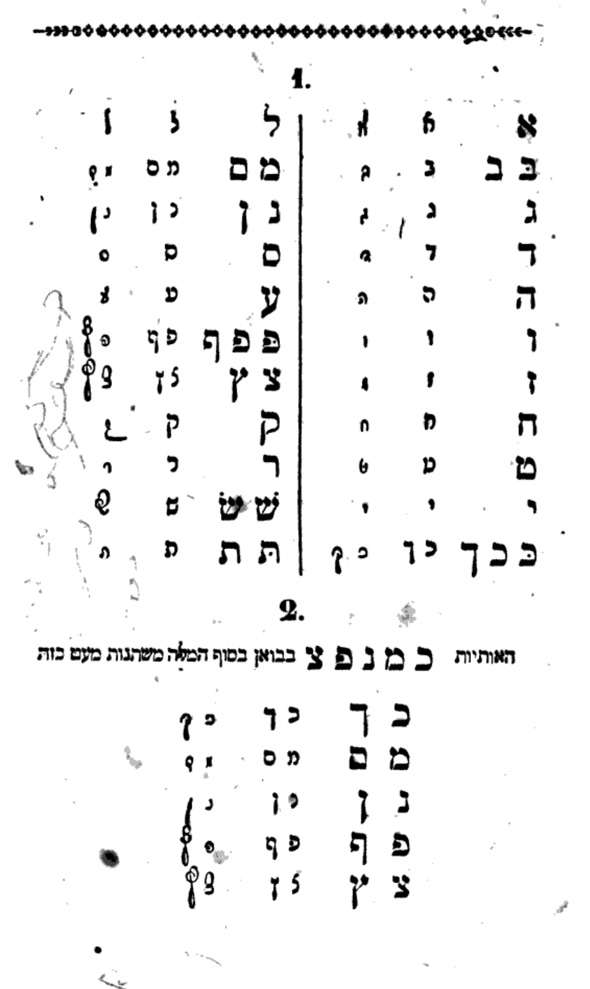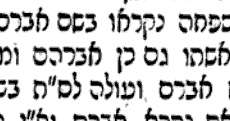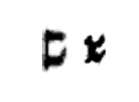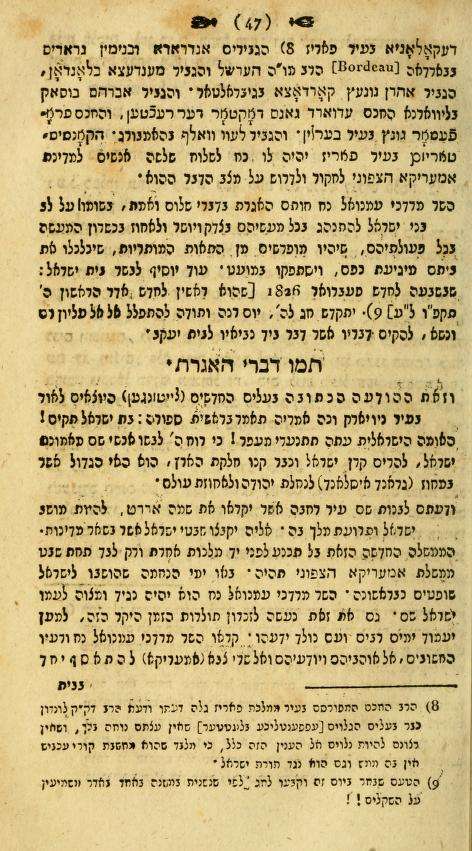
Even the appearance of the book is notable. To begin with, it uses a font styled after the semicursive Hebrew used at the time, and it is instructive to compare it with our own:

Note the forms of letters such as א ק and ש. To this eye at least they appear kind of like a transition between the old waybertaytsch script and our present form. An example of waybertaytsch, albeit used incorrectly, below:

While we're at it, it would be instructive to look another sample of printed Hebrew text to clarify a point about the form of one of the letters. Below is from a letter printed in 1605 in Hugh Broughton's Familia Davidis, quatenus regnum spectat, a letter which is certainly worthy of separate treatment:

Anyone who can read Rashi letters can read it quite comfortably. But at the same time the ש is styled very slightly differently from the form we're more accustomed to seeing today. To prove my point I took a ש from the fairly modern text (below) and then placed it side by side with the ש from 1605:


Why mention all this? Because many people wonder how it is that our cursive ש often looks like very much like a lower case e. As you can see, it is in fact basically the same form as the ש in the Rashi script, but the loop is closed to facilitate writing more quickly.
Back to Mandelstamm's book. One of the goal's of the book was to teach proper German, rather than Yiddish. But to begin doing that the novice had to know the German alphabet, the names of the letters and how they are pronounced:

It was also important to teach how combinations like /ph/ should be pronounced:

As you can see, German names, and in some cases their Hebrew equivalents were listed as well (above and below for some sample):


Other sections of the book are dedicated to geography. I though the following was quite interesting:

Since this was 1849, and Lincoln hadn't yet bought Alaska from Russia, Mandelstamm was able to state that at the Northernmost part of North America lived Russians, who came from Asia by way of Siberia. South of them in Canada are Englishman, and South them are Americans. What's interesting is the term he uses to describe the United States of America, ארץ אנשי הברית. Today the United States is called ארצות הברית in Hebrew, a coinage which dates to the 1850s at least. Some time ago Dave of Balashon wrote a post about the history of the term. He explained how some writers claimed that Mendele Mokher Seforim coined the term, but it was debunked. I feel like Mandelstamm's ארץ אנשי הברית is a little bit like an awkward prototype for the expression. As far as I can tell, most writers in his time and earlier don't really refer to the United States per se, but to אמעריקא הצפונית or North America. Possibly of some note is that in an article in Bikure Ha-ittim Vo. 7 (1826) by Yehuda Jeiteles concerning Mordechai Manuel Noah's call to establish a Jewish state in upstate New York, the author calls the United States מדינות נארד אמעריקא, the States of North America:









It's interesting that he only provided equivalents and cognates for some of the names. I'm by no means an expert in this field (though I have more than a passing interest) and I can already spot a few more off the top of my head: Felix = Simcha, Gottleib = Yedidya. A bit of research can come up with many more. And who names their kid Gibor or Bara Kahama?
ReplyDeleteGreat post!
ReplyDeleteMy Great grandfather's Kisvei yad are all written in that 4th style script. At first going through it, it was very tough to read but then you get used to it fairly quickly. It's a beautiful Ksav when you see it form sentences.
ReplyDeleteInteresting one, after a long time.
ReplyDeleteSample letters